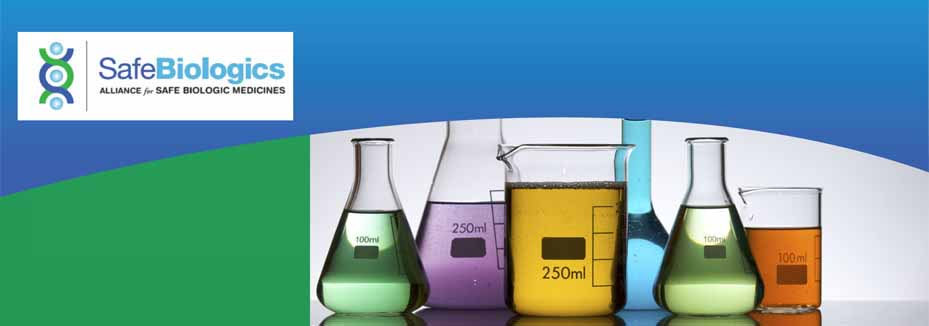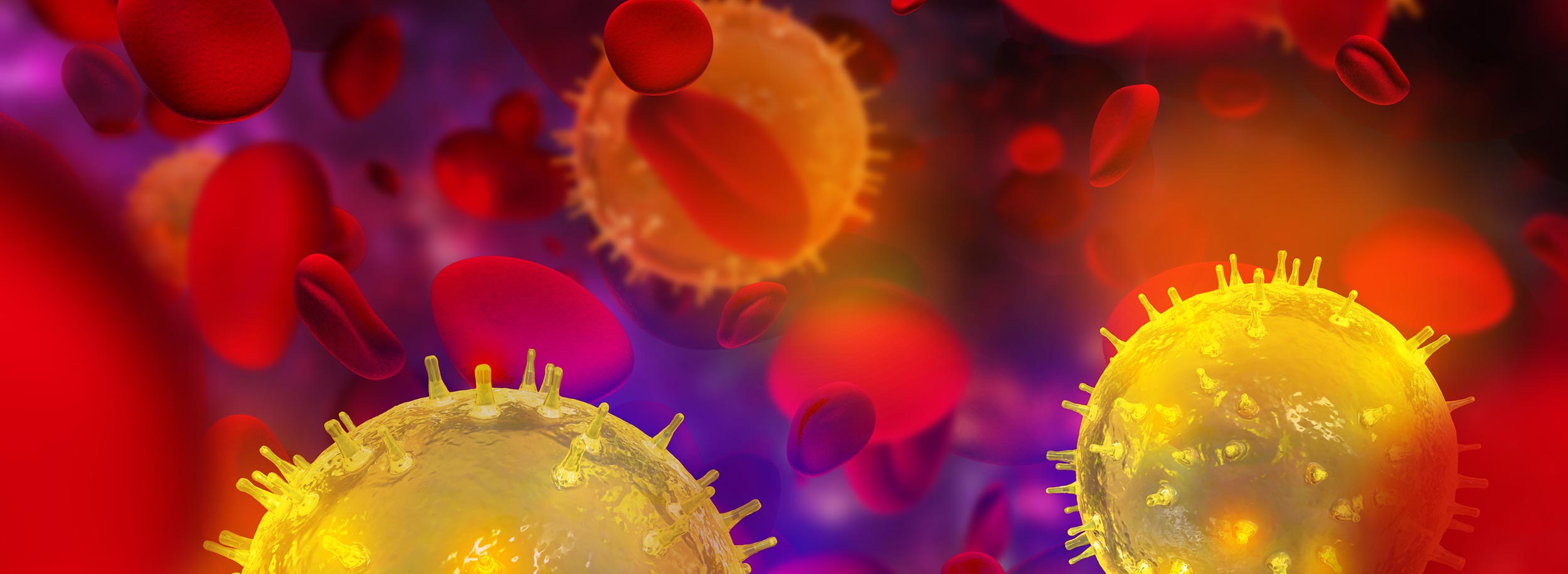
Who We Are
The Alliance for Safe Biologic Medicines is an organization of patients, physicians, pharmacists, biotechnology companies that develop innovative and biosimilar medicines and others, who are working together to ensure that patient safety is at the forefront of the biosimilars policy discussion. It is the mission of the Alliance to serve as an authoritative resource center of information for the public, medical community, the FDA and other state and federal policymakers during the implementation of the biosimilars approval pathway and beyond.
Our Perspective
Biologics are advanced prescription drugs to treat cancer, rheumatoid arthritis and other debilitating diseases. In November 2010 the Food and Drug Administration began consultation with patient groups, physicians and industry on how to approve the first copies of these drugs, known as follow-on biologics or biosimilars. As the FDA moves forward in implementing this pathway, the Alliance for Safe Biologic Medicines will work to ensure patient safety remains the priority.
| ASBM Joins ICAN, other Patient Advocacy Organizations to Oppose Government Use of “March In Rights” In February, ASBM joined 33 other patient advocacy organizations led by the International Cancer Advocacy Network (ICAN) in a letter to U.S. Congressional leadership, urging them to oppose the use of “march-in rights” to break pharmaceutical patents for drugs developed with federal funds. In December, the U.S. Department of Commerce’s National Institute of Standards and Technology (NIST) released for public comment its Draft Interagency Guidance Framework for Considering the Exercise of March-In Rights, a tool to help agencies evaluate when it might be appropriate to require licensing of a patent developed with federal funding. From the letter: On behalf of the patients we represent who are fighting lethal diseases, rare diseases, and chronic conditions, the 34 groups below are writing to express our concern regarding the National Institute of Standards and Technology proposed guidance, Draft Interagency Guidance Framework for Considering the Exercise of March-In Rights. The proposal seeks to expand the federal government’s authority to use the Bayh-Dole Act’s march-in rights provision to re license patents based on price objections. While well intended, this jeopardizes the essential purpose and success of the Bayh-Dole Act, and threatens the biopharmaceutical investment and future innovation that we rely on to improve, extend, and save patients’ lives. The United States plays the leading role in the drug discovery that is at the core of the world’s success in making extraordinary progress in reducing mortality from lethal diseases, and alleviating pain and suffering from chronic conditions. This progress was accelerated, in large part, by the bipartisan Bayh-Dole Act framework that incentivized a complementary and collaborative relationship between the public and private sectors in the drug development pipeline. Before the Act, less than five percent of 28,000 patents owned by the federal government had been licensed.1 In other words, innovation that could have benefitted patients sat on the shelf. While we commend President Biden’s goal to make prescription drugs more affordable for American patients, this proposal does not address the underlying cost drivers that result in high out-of-pocket burdens for patients. Dismantling intellectual property protections could, however, initiate a long-term degradation of the drug discovery and development ecosystem in the United States. We are concerned for the potential harm to our patients—and all patients – that could result. Read the full letter here. Read the Draft Interagency Guidance Framework for Considering the Exercise of March-In Rights here. |
| Reminder: EMA Seeks Public Comment on Re-evaluating the Need for Clinical Safety and Efficacy Data in Biosimilar Development; Comments Due April 30 On January 25, the European Medicines Agency’s (EMA’s) Committee for Medicinal Products for Human Use (CHMP) released a document entitled “Concept paper for the development of a Reflection Paper on a tailored clinical approach in Biosimilar development”. The document expresses the EMA’s intent to streamline biosimilar development by re-evaluating the role of clinical safety and efficacy data; it also announces a three-month public consultation period running from February 1 to April 30, 2024. From the announcement: Constantly striving for scientifically sound yet efficient processes, the Biosimilar regulatory framework has constantly been evolving towards increasingly tailored developments, starting from smaller and “simpler” biologics, such as recombinant Granulocyte-Colony Stimulating Factor (rG-CSF), insulins or somatropin where the need for comparative clinical efficacy trials is in general not required any more. With growing knowledge and the increasing possibilities of analytical and functional characterisation, revisiting the need for clinical efficacy trials for biosimilars (especially recombinant proteins and mAbs) is considered the next important step in order to keep the Biosimilar pathway attractive for developers and, at the same time, guarantee future access to safe and efficacious biologics for European patients. The CHMP recognizes that there may be the potential to waive certain clinical data requirements even for complex biosimilars such as mAbs based on solid evidence of quality comparability. When the biosimilar demonstrates a high degree of similarity to the RMP at the analytical and functional level, it may be possible to justify the omission of dedicated CES. Comments may be submitted here until April 30, 2024. Read the concept paper here. |
| Cardinal Health Releases 2024 Biosimilar Report Cardinal Health has released its 2024 Biosimilars Report, which describes the state of the U.S. biosimilar market and identifies major developments over the past year. From the report’s introduction:As of 2023, there were 46 FDA-approved biosimilars, seven of which have interchangeability designations. As more biosimilars enter the marketplace, adoption increases which leads to greater patient access. The expected cost savings of biosimilars continue to be a key area of interest for the government, payers, providers and patients. According to the recent 2023 U.S. Generic and Biosimilar Medicines Savings Report from the Association for Accessible Medicines (AAM), biosimilars generated savings of $9.4 billion in 2023. Since 2015, savings have now climbed to $23.6 billion. This is likely due in part to increased competition bringing the cost of a reference biologic down by 25%.7 This is an exciting product landscape, with new approvals, launches and regulatory action underway.Among the most important developments in biosimilars of 2023, were the launches of no fewer than nine biosimilars for Humira® (adalimumab) in 2023, and the increased role of the interchangeable biosimilar designation in policy discussions:As the top-selling drug in the world with annual sales of $20 billion in 2022, the potential monetary impact of increased market competition cannot be overstated. Of the nine FDA-approved Humira® biosimilars launched in 2023, two have interchangeability designations from the FDA. When a biosimilar has an interchangeability designation, it may be used instead of the biologic reference product by a pharmacist without a new prescription, like the current process for switching a brand-name drug to a generic drug. Per our research, providers prefer products with an interchangeability designation. However, obtaining an interchangeability designation is costly and time-consuming. Accordingly, many manufacturers have not pursued an interchangeability designation for their products. Read the full 2024 Biosimilars Report here. |
| IRA Price-Setting Adds New Barriers to Curing Rare Diseases On February 19th, The Hill published an op-ed by Eric Dube, president and CEO of Travere Therapeutics, which argues that government price-setting provisions in the Inflation Reduction Act (IRA) discourages development of new drugs to treat rare diseases, and the law must be amended. The IRA’s drug-pricing program allows the federal government to dictate the price Medicare pays for certain brand-name drugs. Recognizing that this policy would likely discourage investment, lawmakers took care to exempt rare disease therapies, also known as “orphan drugs,” from government price setting. Unfortunately, this exemption only applies to medicines approved for a single disease. Any orphan drug approved for two or more diseases — even if it is a rare disease with no treatment — becomes eligible for government-mandated price setting. It’s this feature of the law that is so destructive. One common reason companies can decide to pursue rare disease treatments is the promise that a successful drug might prove effective for multiple conditions. For instance, a treatment that successfully defeats one type of rare cancer might work on another type of tumor, or a drug that addresses one autoimmune condition might prove similarly effective on others. When a disease is rare, scientific progress that saves lives often depends on this approach.Drug innovation is a highly risky enterprise, after all. It can cost billions of dollars to develop a new drug, particularly when you take into account the cost of unsuccessful programs. And only about 12 percent of new medicines that enter clinical trials ultimately earn approval. The possibility that a line of research might produce a treatment for more than one disease helps reduce some of that risk, making it easier to attract investors. So by discouraging work on multiple rare diseases, the IRA creates significant new obstacles to developing innovative new medicines. The author urges Congress to reform the IRA by passing theORPHAN Cures Act, which enjoys broad, bipartisan support. The bill would ensure that all orphan drugs — and not just single-disease therapies — are exempt from the law’s pricing program. Read the op-ed here. Read more about the ORPHAN Cures Act here. |
| FDA Approves First Interchangeable, High-Concentration, Citrate-Free Adalimumab Biosimilar On February 26, the U.S. FDA announced the approval of the SIMLANDI (adalimumab-ryvk) injection as an interchangeable biosimilar to Humira (adalimumab), for the treatment of adult rheumatoid arthritis, juvenile idiopathic arthritis, adult psoriatic arthritis, adult ankylosing spondylitis, Crohn’s disease, adult ulcerative colitis, adult plaque psoriasis, adult hidradenitis suppurativa and adult uveitis. SIMLANDI is the first high-concentration, citrate-free biosimilar to Humira that has been granted an interchangeability status by the FDA, and will qualify for interchangeable exclusivity for the 40mg/0.4ml injection. While both low-concentration and high-concentration strength biosimilars of Humira are marketed in the U.S. today, nearly 88 percent of U.S. prescriptions for adalimumab are for the high-concentration presentation. An interchangeable biosimilar may be substituted at the pharmacy without consulting the prescriber, much like generic drugs are routinely substituted for brand name drugs. As the only interchangeable adalimumab biosimilar with the high-concentration formulation, SIMLANDI can be substituted for Humira at the pharmacy level, subject to state pharmacy laws. Read more about the approval here. |
| UPCOMING EVENTS WHO 78th INN ConsultationGeneva, Switzerland – March 19, 2024 ASCO Annual MeetingChicago, IL – May 31-June 4, 2024 BIO International Meeting San Diego, CA – June 3-6, 2024 DIA Global Annual Meeting San Diego, CA – June 16-20, 2024 |
